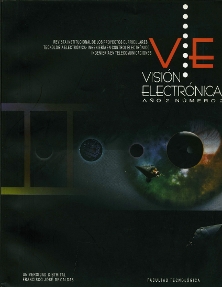DOI:
https://doi.org/10.14483/22484728.792Publicado:
2008-12-30Número:
Vol. 2 Núm. 2 (2008)Sección:
Visión InvestigadoraEstudio comparativo de técnicas artificiales para la predicción de una serie de tiempo caótica
Comparative Survey Of Technical Artificial For The Prediction Of A Caoic Series Of Time
Palabras clave:
computational intelligence, fuzzy logic, genetic algorithms, fuzzification, error to the square, firing strength. (en).Palabras clave:
Inteligencia computacional, ló, gica difusa, algoritmos gené, ticos, fusificació, n, desfusificació, error al cuadrado, peso de cumplimiento. (es).Resumen (es)
En este artículo se presenta el procedimiento y el resultado principal de un estudo comparativo preliminar basado en el uso de dos herramientas de inteligencia computacional aplicadas en una tarea de predicción de una serie de tiempo caótica. El conjunto de datos de la serie viene del modelado del tráfico mmicroscópico, de un automóvil a través de una suceción de semáforos (figura 1) presentado en [1]. Este estudio podría ayudar en el futuro para diseña sistemas de predicción de tráfco macroscópico para controlar los períodos de congestionamiento vehicular. Los métodos de predicción de series de tiempo comparados fueron, el algoritm ANFIS (Sistema de Inferencia Neuro-difuso Adaptativo) y otro basado en un algoritmo genético evolutivo. Luego se presentn se analizan los resultados de este estudio, bajo el criterio de la suma del error al cuadrado y el tiempo de procesamiento requerido
Resumen (en)
In this article is showed both the procedure and the main result of a study comparative preliminary based on the use of two tools of computational intelligence applied in a task of prediction of a chaotic series of tim. The data set series coes drom modeling the microscopic traffic, of an automobile through a succession of traffic ligths (Figure 1) presented in [1]. This study could help in the future to design systems of prediction of macroscopic traffic to control the periods of vehicuar jamming. The compared methods of time serie prediction were the algorithm ANFIS (System of Neural - Diffuse nference Adaptative) and other based in an evolutionary genetic algorithm. Then the results were presented and analysed, under the approach of the sum of the quadratic error and required machine processing time.
Referencias
Toledo B.A., V. Muñoz, J. Rogan, y C. Tenreiro. Modeling traffic through a sequence of traffic lights, Physical Review, 2004.
J.J.R. Jang, C.T. Sun. Predicting chaotic time series with fuzzy if-then rules, IEEE International Conference Fuzzy System., 1993.
T. Takagi, M. Sugeno, Fuzzy identification of system and its applications to modeling and control, IEEE Transactions on Systems, Man, and Cybernetics, Vol. 15, 1985.
J.-S. R Jang. ANFIS: Adaptive-Network-based Fuzzy Inference Systems, IEEE Transactions on Systems, Man, and Cybernetics, Vol. 23, 1993.
T.P. Meyer, N. H. Packard. Local Forecasting of High-Dimensional Chaotic Dynamics, Nonlinear modeling and forecasting. Addison-Wesley, 1991.
M. Melanie. An Introduction to Genetic Algorithms, MIT Press, 1998.
J.-S. R. Jang, C.-T. Sun, E. Mizutani. Neuro-Fuzzy and Soft Computing-A Computational Approach to Learning and Machine Intelligence, Prentice Hall, 1997.
Z. Li, W. Halang, G. Chen. Integration of Fuzzy Logic and Chaos Theory, Springer, 2006.
S. Zak. Systems and Control, Oxford University Press, 2003.
M. Melgarejo. Apuntes de clase Sistemas Expertos e Inteligencia Artificial, Maestría en Ingeniería Industrial, Universidad Distrital Francisco José de Caldas, 2006.
C R. Reeves, J E. Rowe. Genetic Algorithms: Principles and perspectives Guide to GA Theory, Kluwer Academic Publishers, 2002.


.png)




.jpg)





